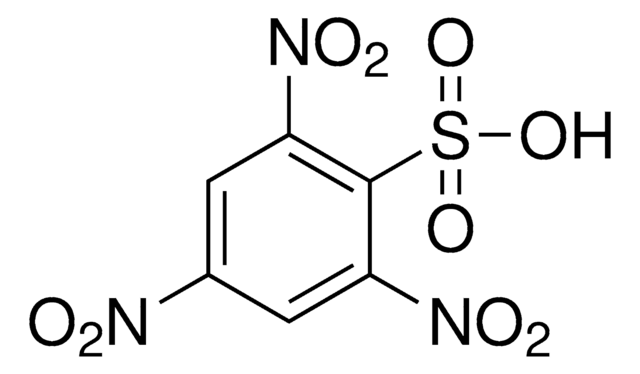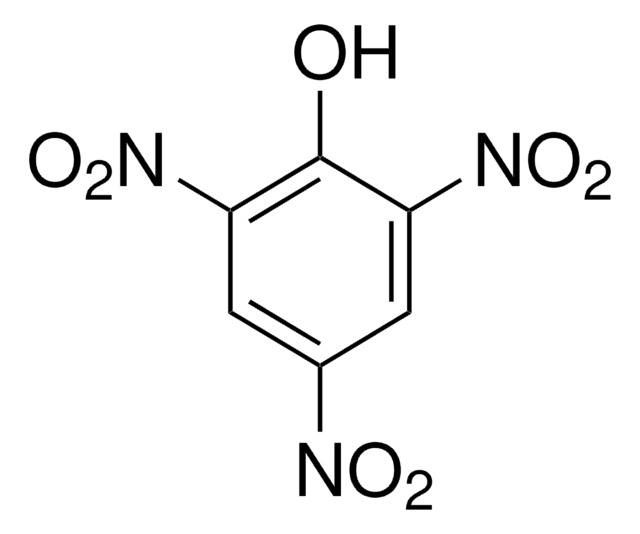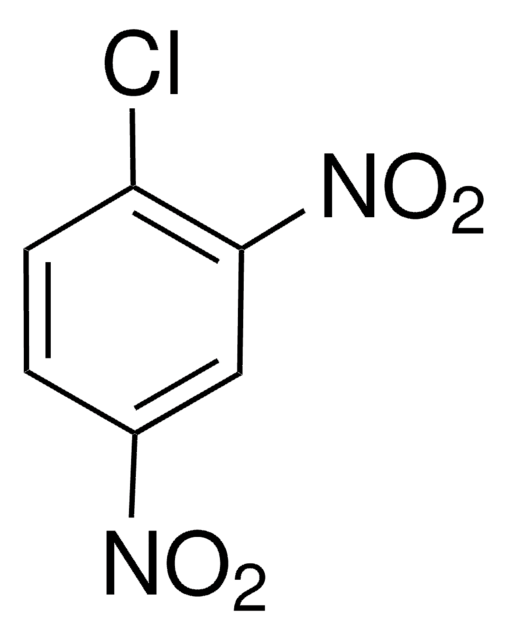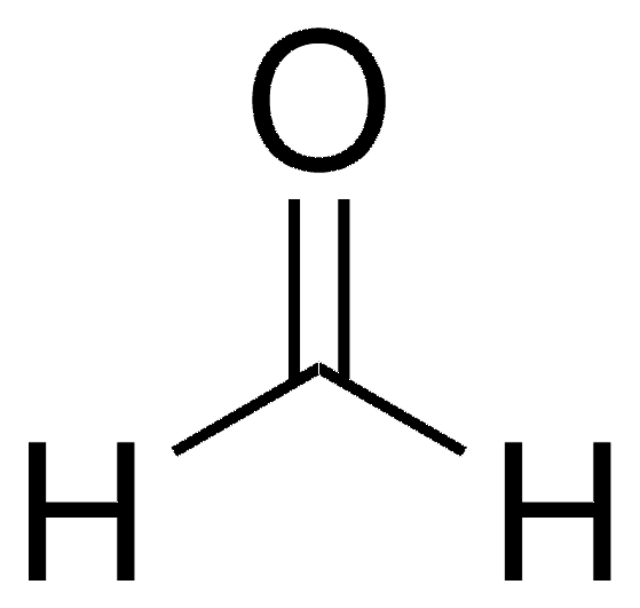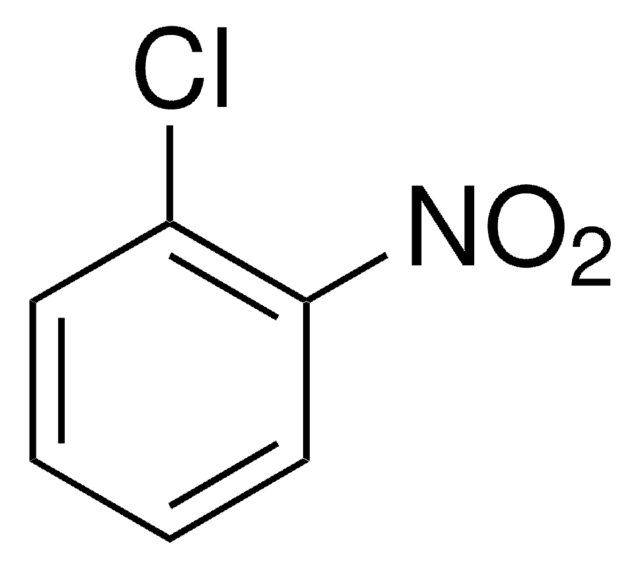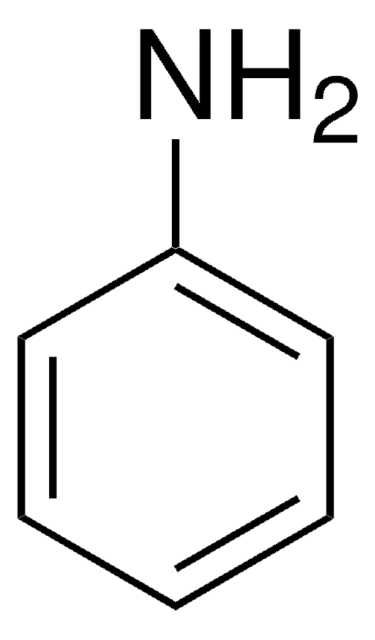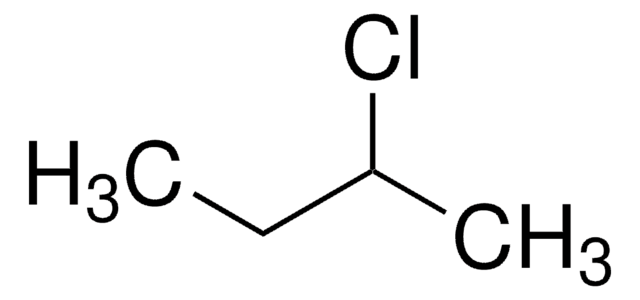79874
2-Chloro-1,3,5-trinitrobenzene
≥98.0% (HPLC)
Synonym(s):
2,4,6-Trinitrochlorobenzene
Sign Into View Organizational & Contract Pricing
All Photos(1)
About This Item
Empirical Formula (Hill Notation):
C6H2ClN3O6
CAS Number:
Molecular Weight:
247.55
Beilstein:
1588666
EC Number:
MDL number:
UNSPSC Code:
12352100
PubChem Substance ID:
NACRES:
NA.22
Recommended Products
Quality Level
Assay
≥98.0% (HPLC)
form
lumps
functional group
chloro
nitro
SMILES string
[O-][N+](=O)c1cc(c(Cl)c(c1)[N+]([O-])=O)[N+]([O-])=O
InChI
1S/C6H2ClN3O6/c7-6-4(9(13)14)1-3(8(11)12)2-5(6)10(15)16/h1-2H
InChI key
HJRJRUMKQCMYDL-UHFFFAOYSA-N
Other Notes
moistened with ~15% water
Signal Word
Danger
Hazard Statements
Precautionary Statements
Hazard Classifications
Acute Tox. 1 Dermal - Acute Tox. 2 Inhalation - Acute Tox. 2 Oral - Aquatic Acute 1 - Aquatic Chronic 1 - Flam. Sol. 1
Supplementary Hazards
Storage Class Code
4.1B - Flammable solid hazardous materials
WGK
WGK 2
Flash Point(F)
Not applicable
Flash Point(C)
Not applicable
Personal Protective Equipment
dust mask type N95 (US), Eyeshields, Gloves
Regulatory Information
新产品
Choose from one of the most recent versions:
Already Own This Product?
Find documentation for the products that you have recently purchased in the Document Library.
Andreas Natsch et al.
Chemical research in toxicology, 24(11), 2018-2027 (2011-10-26)
The skin sensitization potency of chemicals is partly related to their reactivity to proteins. This can be quantified as the rate constant of the reaction with a model peptide, and a kinetic profiling approach to determine rate constants was previously
Atsuto Ogata et al.
International immunopharmacology, 11(10), 1628-1632 (2011-06-07)
A chymase inhibitor SUN13834 has been shown to improve skin condition in animal models for atopic dermatitis. In the present study, effective dosages of SUN13834 for atopic dermatitis patients were predicted by pharmacokinetic/pharmacodynamic (PK/PD) analyses of SUN13834 in NC/Nga mice
Eujin Cho et al.
Journal of ethnopharmacology, 145(1), 294-302 (2012-11-15)
Korean red ginseng (KRG) has been shown to possess various biological activities including anti-inflammatory properties. We aimed to investigate the effects and mechanism of KRG on the prevention of atopic dermatitis (AD) using a mouse model. The effect of KRG
M Hagiyama et al.
The British journal of dermatology, 168(4), 771-778 (2012-10-31)
Neuroimmunological disorders are involved in the pathogenesis of atopic dermatitis (AD), partly through enhanced sensory nerve-skin mast cell interaction. Cell adhesion molecule 1 (CADM1) is a mast-cell adhesion molecule that mediates the adhesion to, and communication with, sympathetic nerves. To
Eriko Suwa et al.
European journal of pharmacology, 667(1-3), 383-388 (2011-06-15)
Effects of the histamine H(4) receptor antagonist 1-[(5-chloro-1H-indol-2-yl)carbonyl]-4-methylpiperazine (JNJ7777120) were examined for 99 days in a long-term experimental model of pruritic dermatitis induced by repeated challenge with 2,4,6-trinitrochlorobenzene (TNCB) in HR-1 mice. Repeated application of TNCB to the back skin
Our team of scientists has experience in all areas of research including Life Science, Material Science, Chemical Synthesis, Chromatography, Analytical and many others.
Contact Technical Service